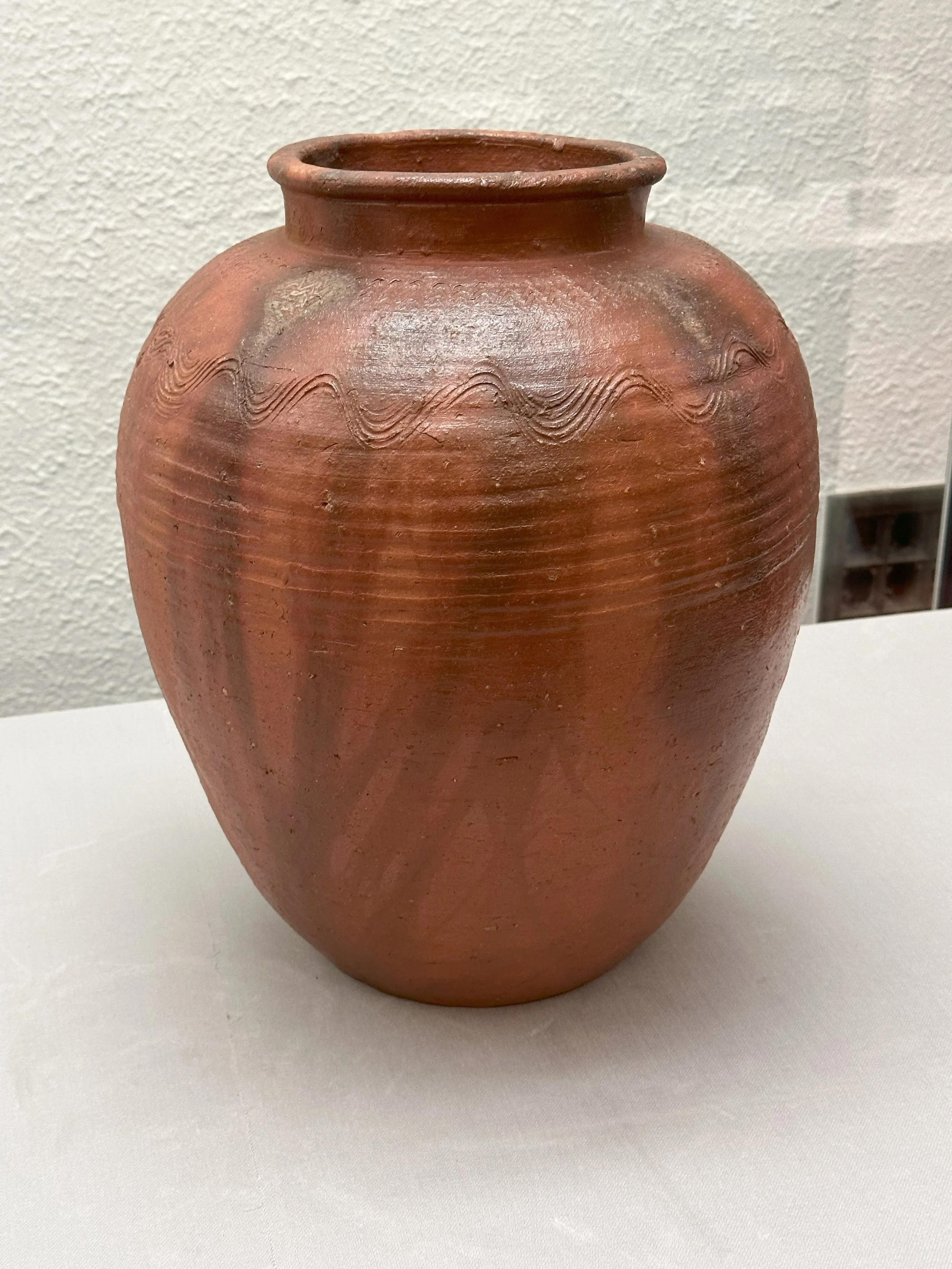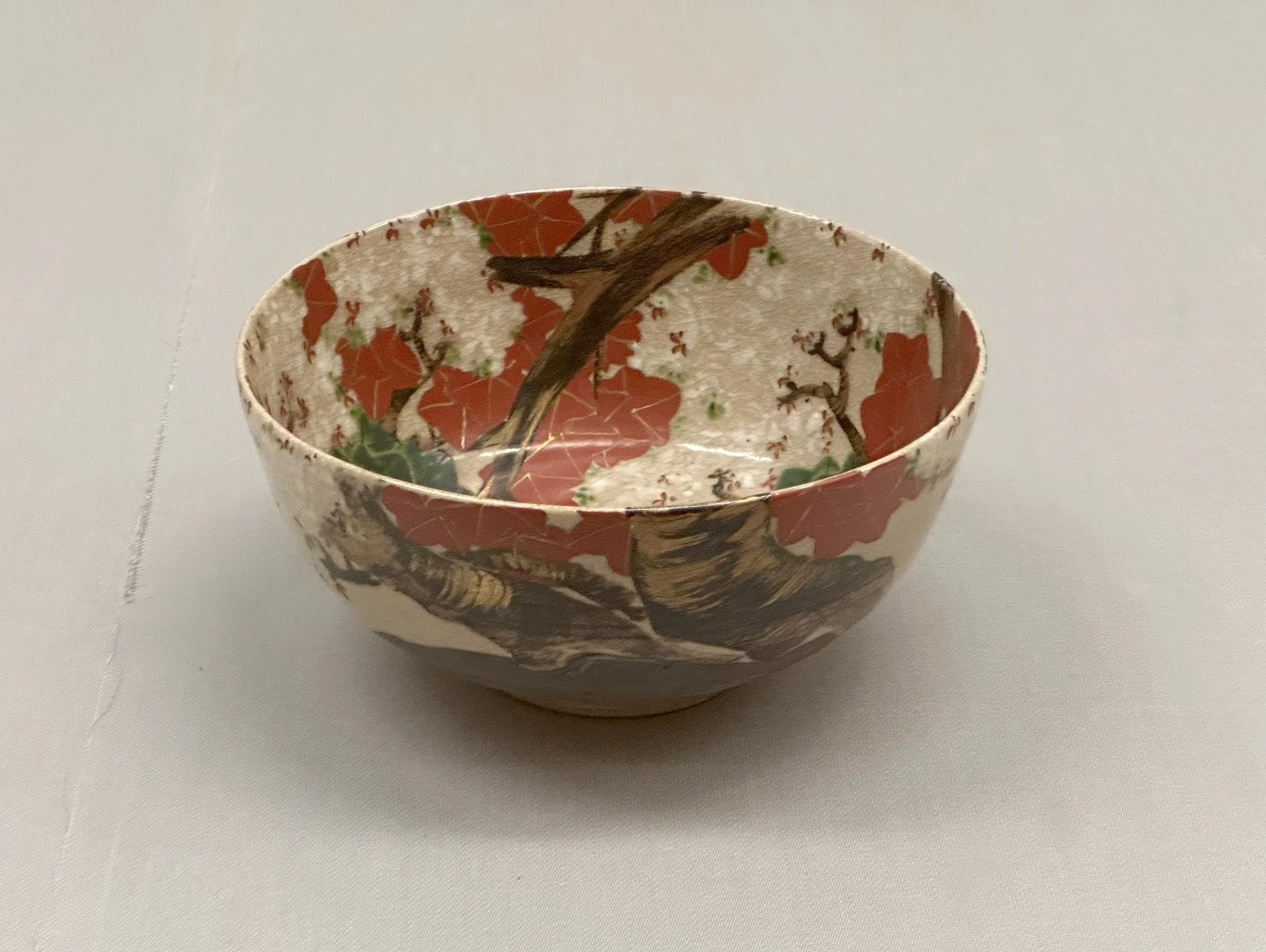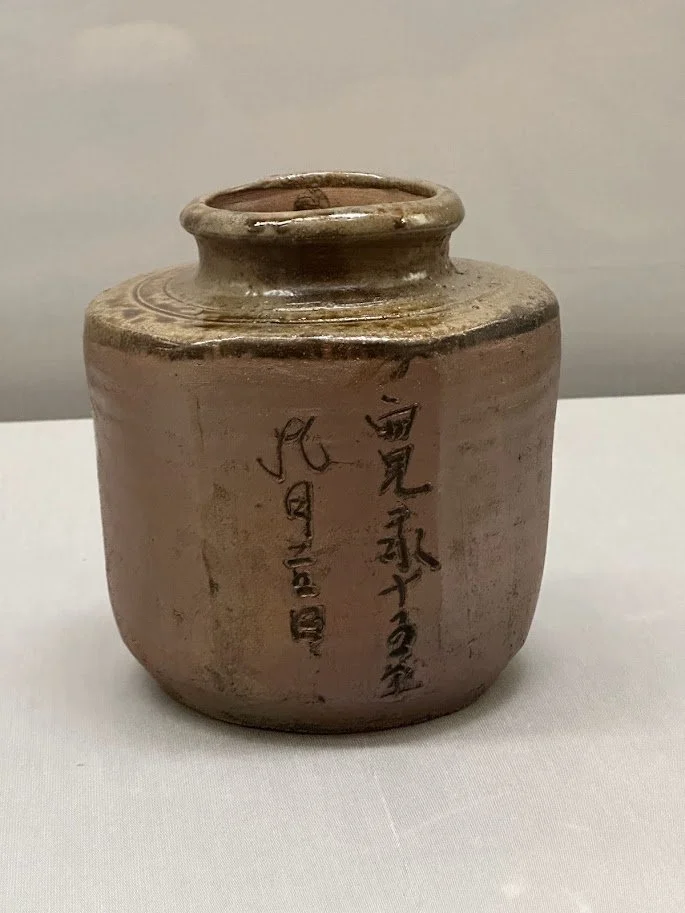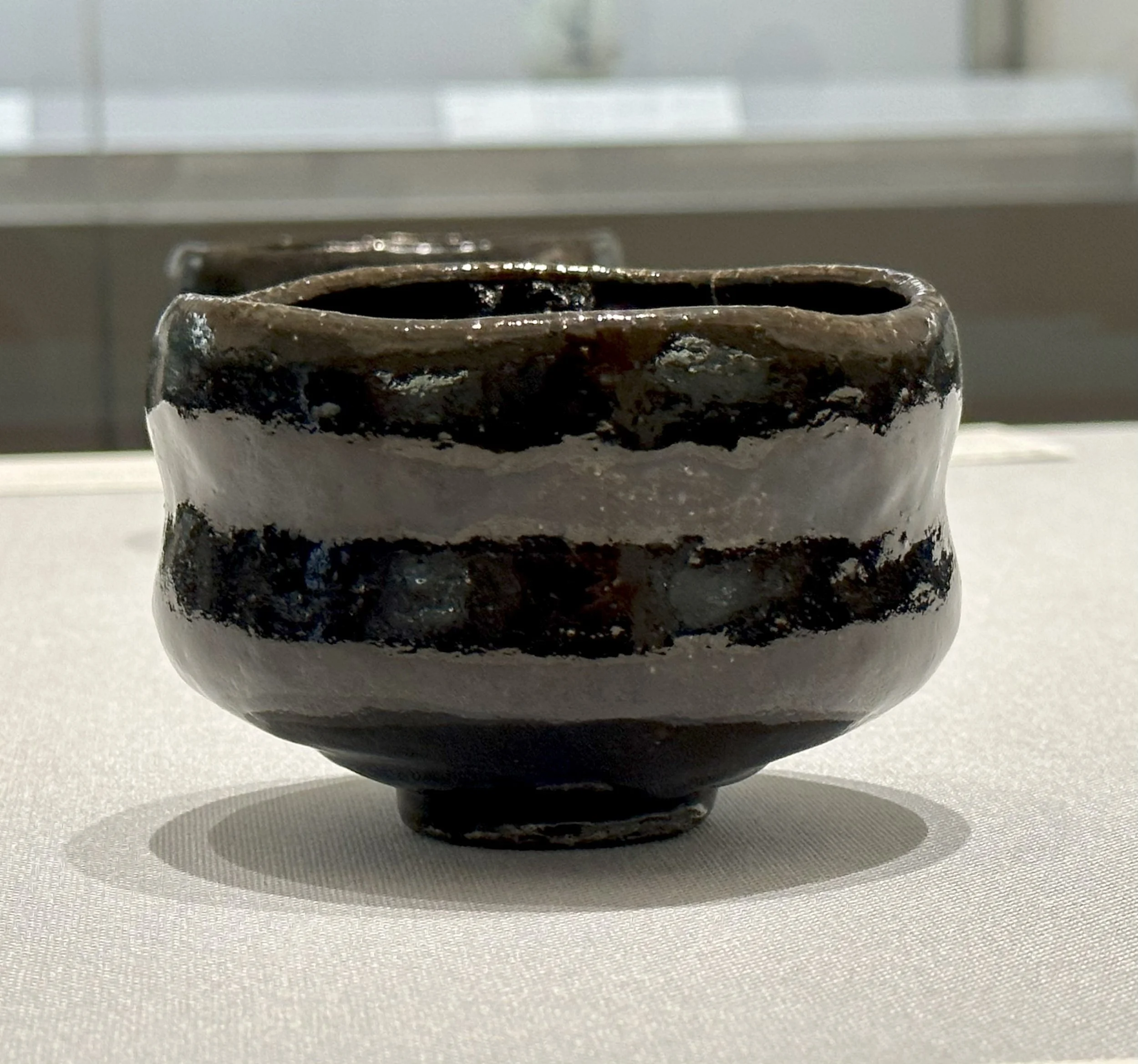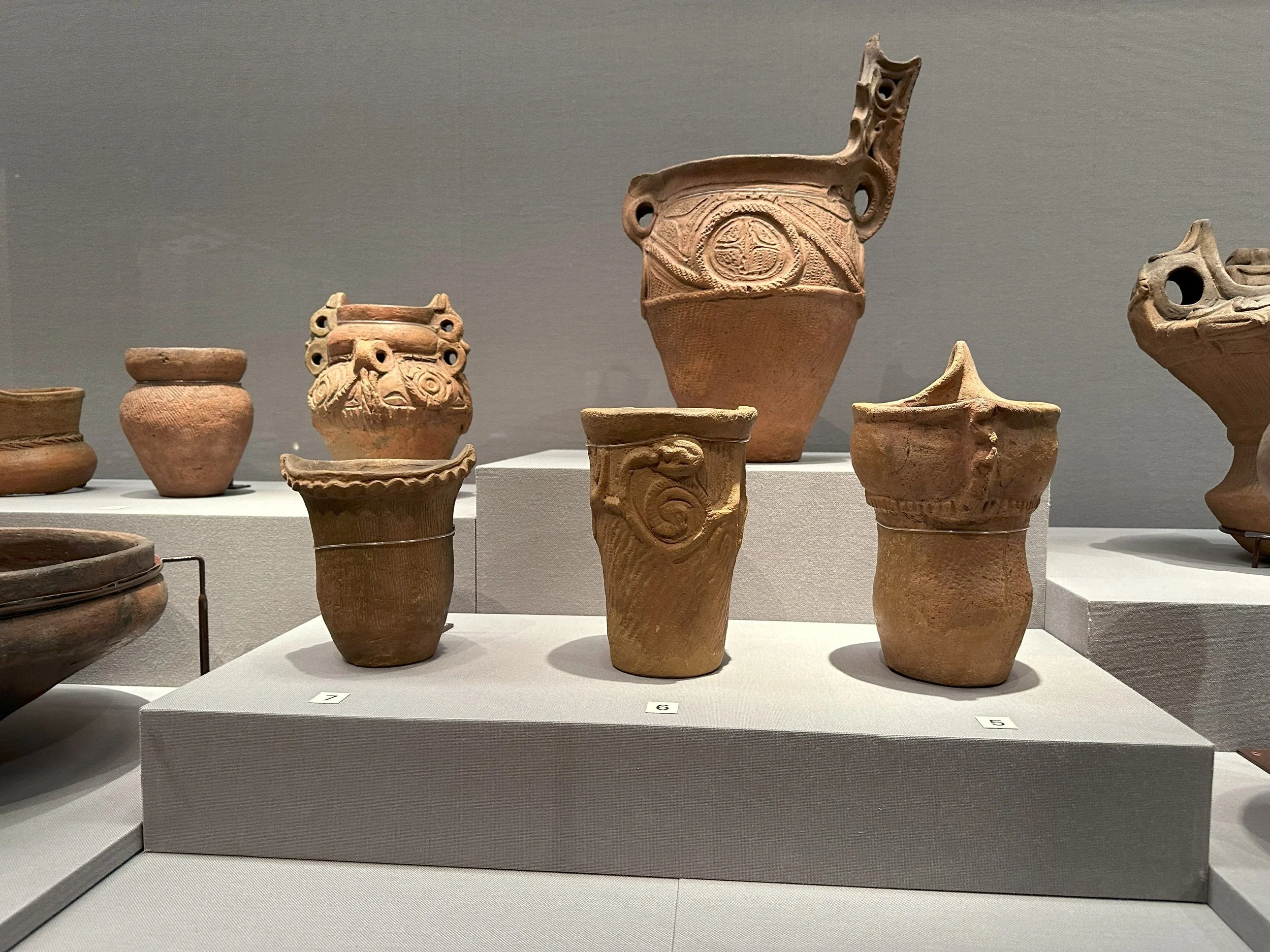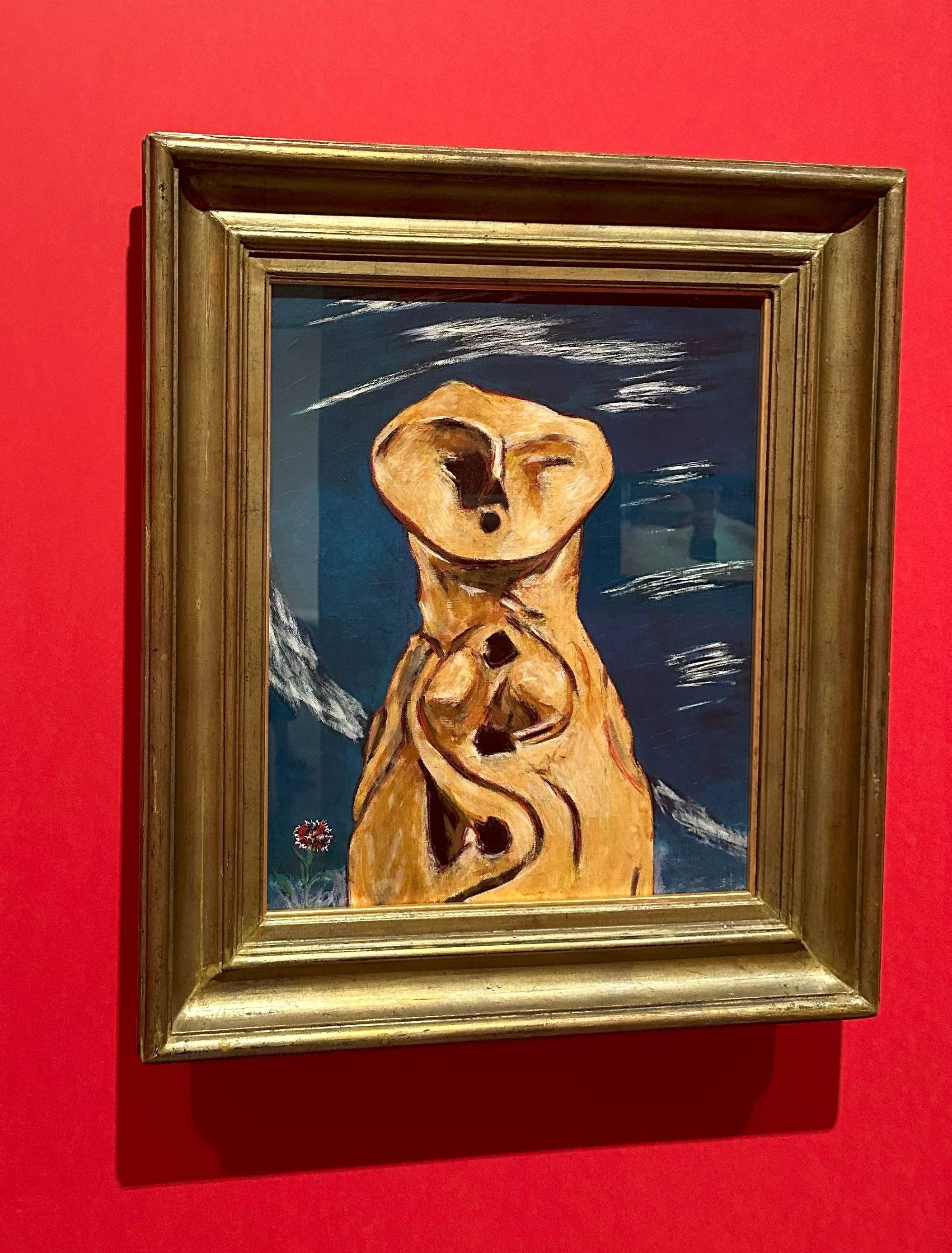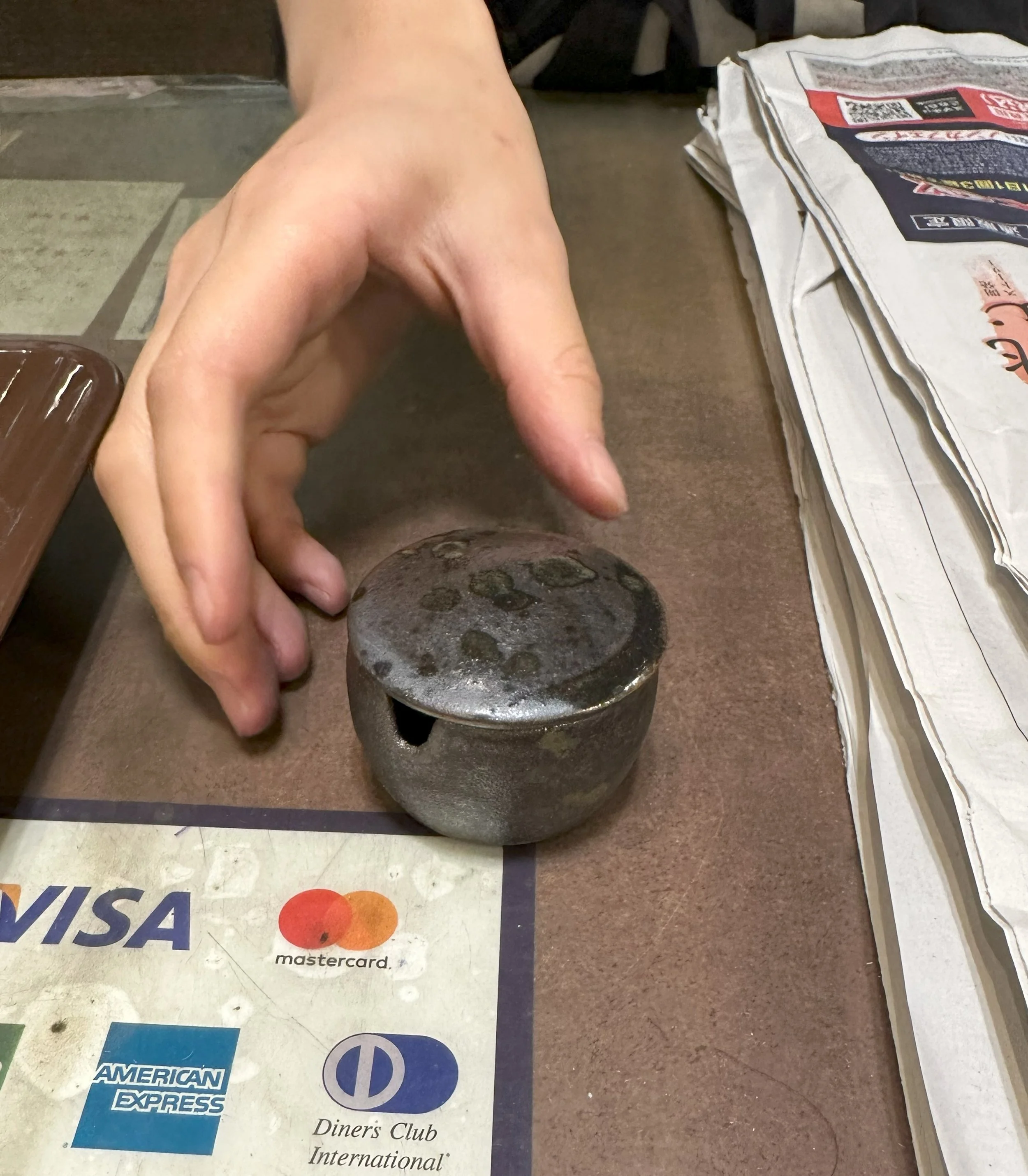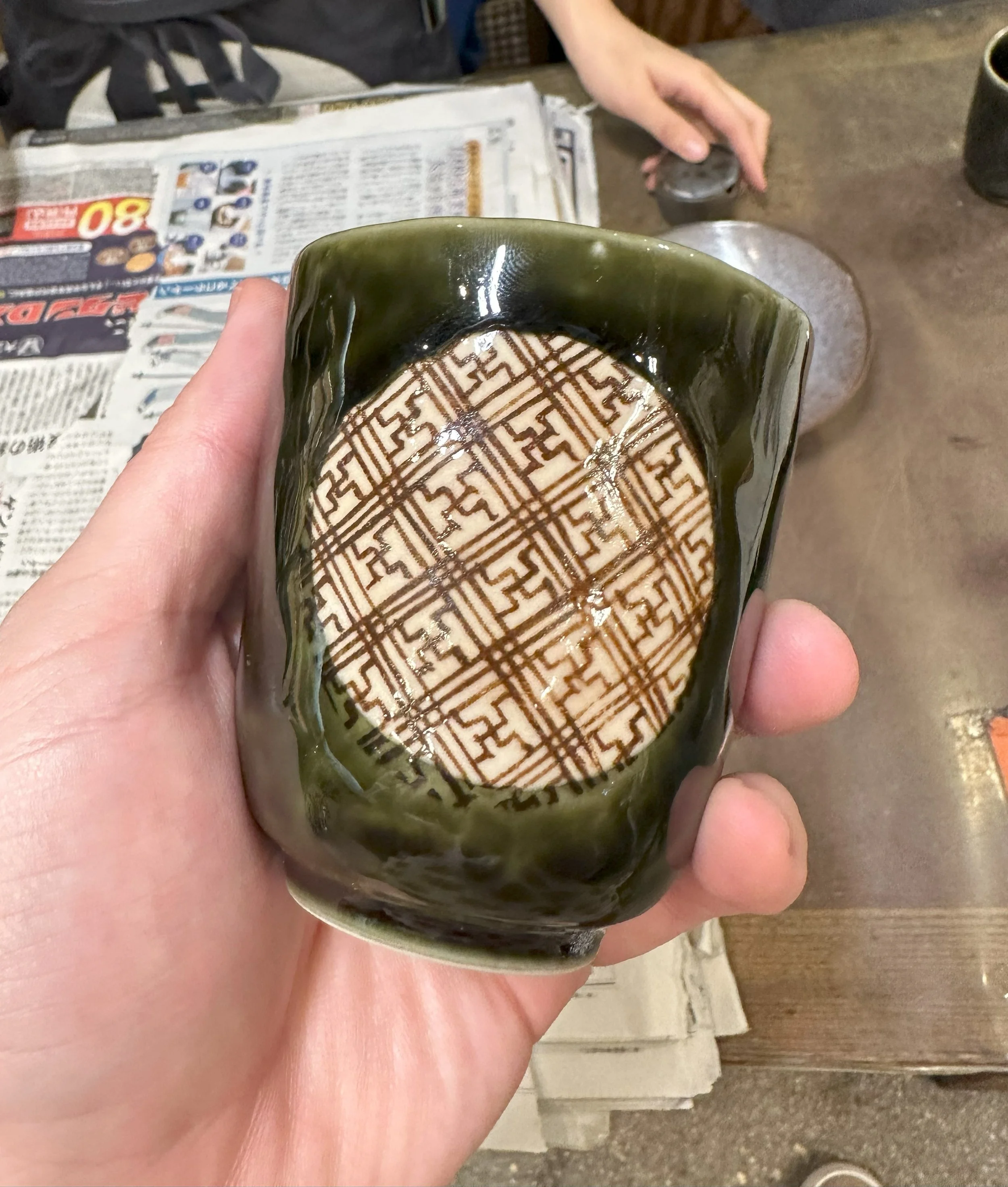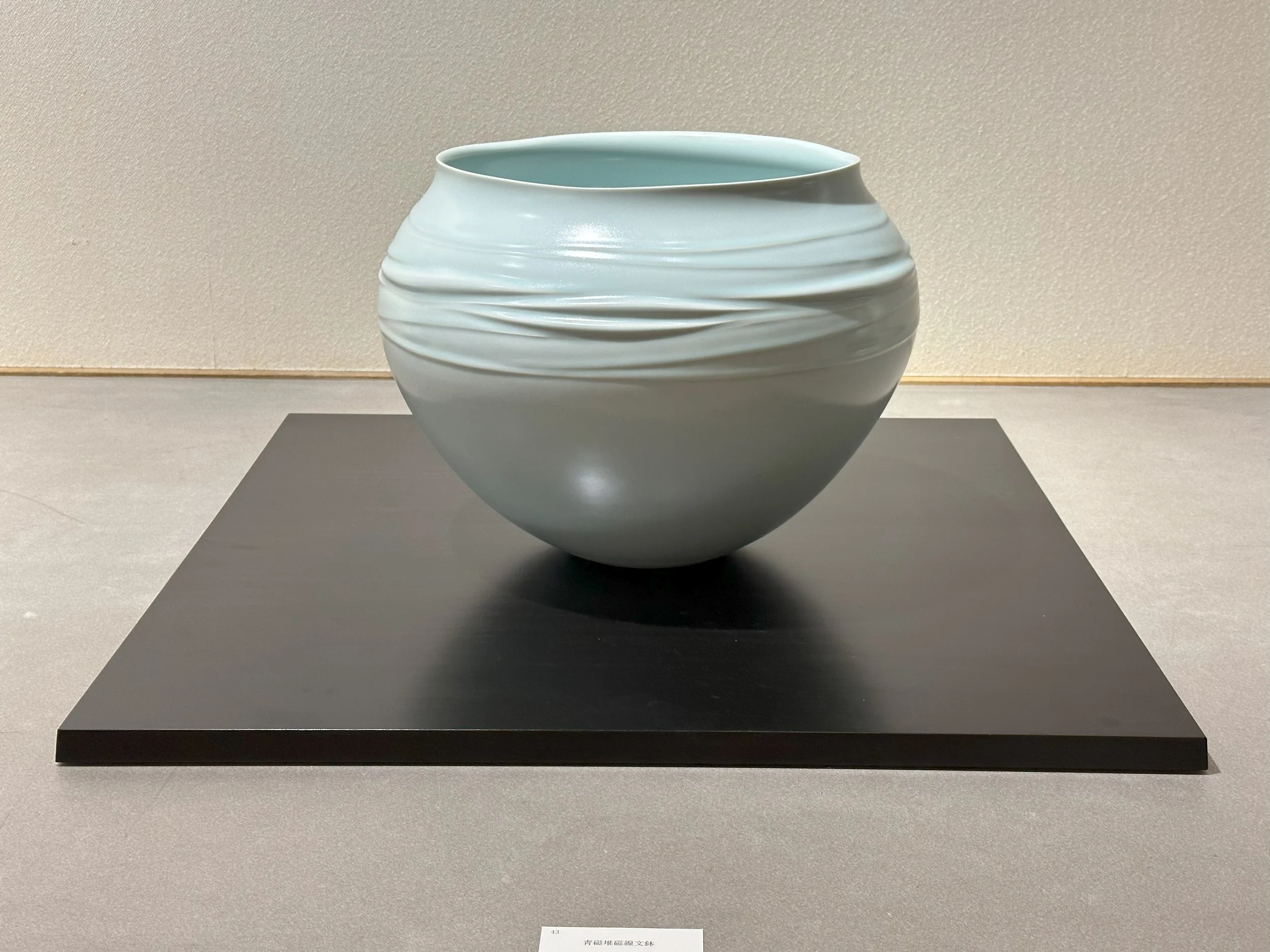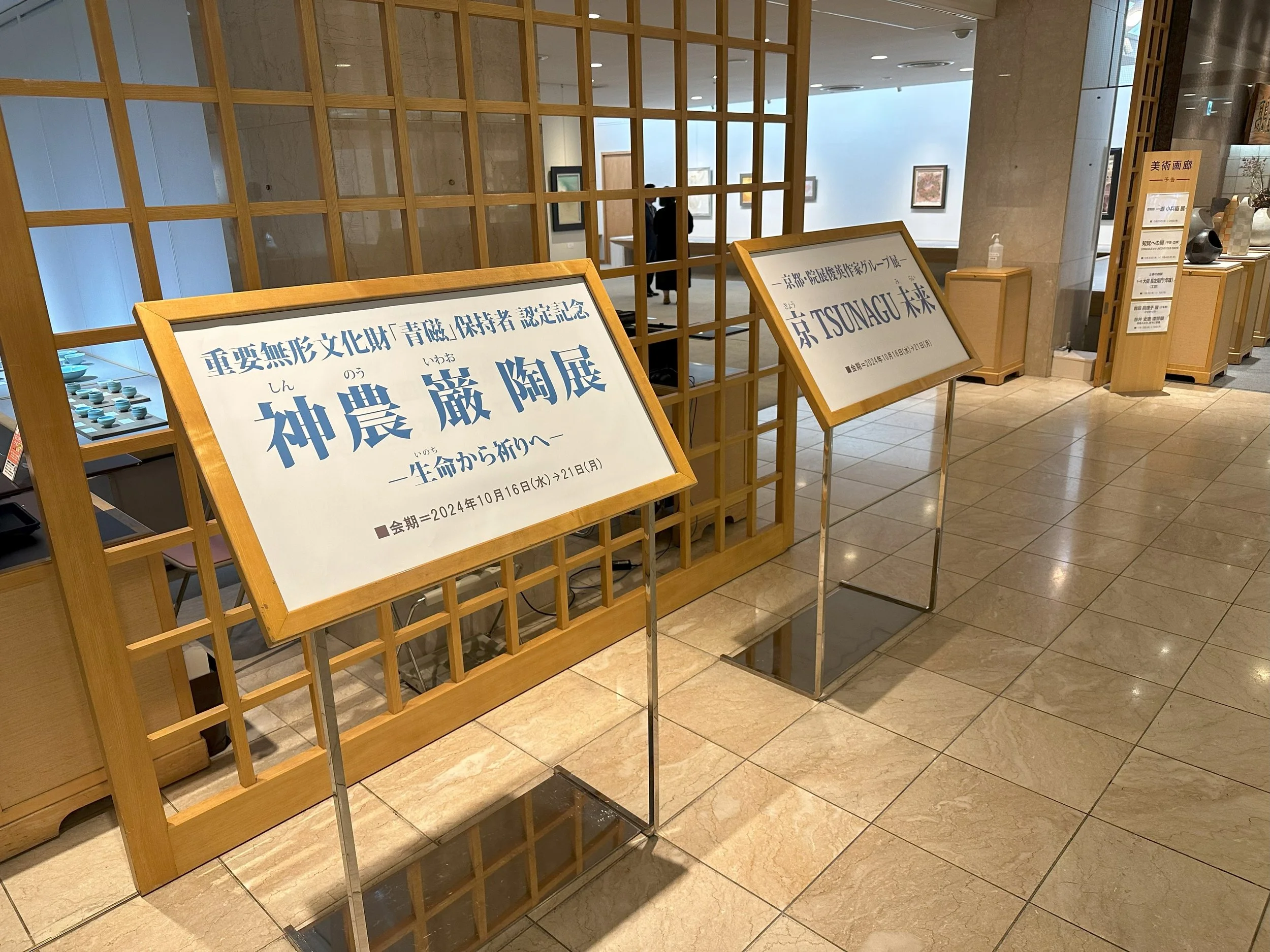
Tokyo
The very definition of a megapolis. We spent a week here staying in Shinjuku, and while I saved most of my hardcore ceramics nerdery for after my wife headed back home, it’s impossible to experience Tokyo without getting a fair bit of exposure to the stuff. That said, there’s probably more missing from this list than there on it. We could have probably spent a week in Shinjuku and Shibuya itself, so we had to make cuts somewhere. We mostly hit up the big museums If you read this and think “How could he have gone to Tokyo and not seen X?” you’re correct.
Tokyo National Museum
The Tokyo National Museum is basically THE repository of important cultural artifacts, including ceramics. My favorite was a collection of six tea bowls by different generations of the Raku family all side by side. There was also an excellent collection of ceramics from the Jomon era, a hunter gatherer society in Stone Age japan known for their highly decorated pottery. You might recognize it as it inspired a lot of design in Breath of the Wild.
National Museum of Modern Art
The National Museum of Modern Art had a special exhibition on Haniwa and Dogu, two types of ancient ceramic statues made by the Jomon and Yayoi cultures. While you might recognize Jomon ceramics because of BotW, Haniwa should look familiar to anyone who’s ever encountered a gyroid in Animal Crossing. The exhibit was really fascinating, and focused on how our interactions with ancient art can evolve over time. The exhibit starts with early archaeological takes on the statues, which were only concerned with their history and largely ignored their possible artistic meaning. It then moves on to how nationalist movements focused on the statues as a way of differentiating Japanese culture from other East Asian cultures. Finally, it moves on to modern and contemporary takes on the forms, ranging from cubist and abstract paintings, to children’s television shows.
Kappabashi Street
Kappabashi Street in Asakusa is a must see for anyone with an affinity for cooking and tableware. It’s an entire street a few minutes walk from Senso-Ji temple that focuses on cookware, utensils, ceramics, and all things related. I couldn’t even make it to the street proper before starting shopping. On the way from Asakusa, I stopped by a shop called Soil and got a few bowls, then stopped at a shop named Hitsuru entirely dedicated to supplies for running a soba shop and got some wood-fired plates and a soba knife. Once on Kappabashi St proper, I then got a few Oribe style teacups, some handmade chopsticks, and a tiny adorable saltwell
Department Stores - Seibu, Daimaru, Ginza 6, Takashimaya
One thing we learned as we went was not to sleep on department stores when shopping for ceramics or other crafts. Brick and mortar retail in the States is going through a rough patch at the moment, but someone clearly forgot to tell the Japanese about it. Department stores like Seibu in Shibuya and Takashimaya in Kyoto are multi-floor extravaganzas of shopping, and most have an area dedicated to home goods, with a wide array of ceramics, glass, and lacquerware, both in western and Japanese styles. Most also have art galleries and showrooms (normally on the top floor) that rotate content frequently. I saw a handful of cool shows, with the two that stood out most being “Avant garde tea ware” in Seibu in Shibuya, and a display of celadon wares in Takashimaya in Kyoto by living national treasure Iwao Shinno. The latter was conveniently located one floor down from the official Nintendo store in Kyoto. Luxury megastore Ginza Six also had a few really nice ceramics, metalwork, and lacquerware stores scattered amongst the luxury fashion brands, and the Tsutaya branch on their top floor is a goddamn treasure trove of books on Japanese crafts and culture.
Also, everyone always talks about how wonderful Don Quijote is but holy BALLS it is a goddamn airhorn to the face of crowds and overstimulation. We stopped by the Shibuya branch to buy an extra suitcase, and after ten minutes in the store were both ready to punch strangers in the face.
National Art Gallery
The National Art Gallery in Roppongi didn’t have much in the way of ceramics, but did have multiple amazing galleries of fine art and sculpture worth checking out. I say “multiple galleries,” because the way it’s laid out is as one main atrium with multiple smaller galleries shooting off of it, all of which are ticketed and apparently run independently. I’d recommend checking online before going to see what they’ve got on. We saw one exhibition of work by a frankly frighteningly prolific artist named Tanaami Keiichi. He had passed recently, so they had a sweet memorial plaque about his death at the end. We also saw two other galleries of work by a large variety of contemporary artists. I’ve lost the brochures I had for them, but they were run by artist associations, so rather than being one single subject or style, there was a LOT of variety.
Ginza
Ginza is the high-end shopping hub of Tokyo, with the main drag packed to the gills with Gucci, Prada, Mikimoto, Rolex, and the like. There's not a whole lot of art or crafts available on the main street (though if you like stationery, Itoya and Kyukyodo are a must), but the side streets are full of smaller shops and galleries. I found a number of them around the APA Ginza hotel. Google maps is your friend, but most of the shops I found only had japanese names, so keep an eye out for that. Ginza 6, the famous luxury department store, also has a few traditional craft shops scattered among the designer brands, and the book store that occupies the top floor is FULL of books on Japanese art, crafts, and design.
Shops
An incomplete list of the shops we visited:
Seibu Department Store (Shibuya)
Seikado (Ginza 6, home goods)
Soil (Kappabashi, ceramics)
Hitsuru (Kappabashi, soba restaurant supplies)
Bizen Mugenan Ginza (Ginza, ceramics gallery specializing in Bizen ware)
Kurodatoen (Ginza, SUPER high-end gallery)
Itoya (Ginza, art supply and stationery)
Senchado (Ginza, sencha tea)
Mokuhankan Woodblock Prints (Asakusa, ukiyo-e prints)

